The Stranger Beside Me Read online
Page 3
Both Dr. Burns and Dr. Hoshall had been instrumental in identifying the remains of Kimberly Dianne Leach, twelve years old, the little girl from Lake City, Florida, who was Ted Bundy’s last victim. Although it was Burns’s signature on the official identification form, it was Hoshall who opened the little wooden box containing Kimberly’s skull and jaw.
Peter Lipkovic, the medical examiner of the Fourth Judicial Circuit of Florida, had asked Hoshall to use his skill as a forensic dentist to tell us the truth. With anatomic identification, skeletal-dental components, and X-rays, Hoshall would be able to say absolutely if the size, placement, and even baby teeth matched the earlier dental treatment of Kimberly Leach. Ironically, Kimberly had had a fresh extraction shortly before she vanished.
Her parents had taken good care of her.
It wasn’t an easy assignment for Clark Hoshall. His own daughter, Victoria, was the same age as Kimberly Leach, and he couldn’t stop his mind from making comparisons and wondering how Kimberly’s family could bear this tragedy.
Ken Robinson, the Florida Highway Patrol Officer who had found Kimberly’s skeleton in the hog farrowing shed near Suwanee State Park, had similar feelings: rage that anyone could do this to a seventh grader and a feeling of powerlessness that it was too late to save her.
I suspect that few laymen understand the grief processes that law enforcement officers and forensic experts and prosecutors go through when the victims they seek to avenge are the most vulnerable of all: children.
“I was the first witness to arrive for the execution of Theodore Robert Bundy,” Clark Hoshall wrote, and added to it when I talked to him by phone later. “When I arrived it was around three A.M. The moon was haloed and occupied a porthole in the otherwise cloud-covered sky. The impressive guard tower next to the main gate surveyed neatly manicured grass that carpeted three separate areas of razor-wired coils. Additionally, the ten-foot fencing presented an aura of impermeability.”
The rest of the official witnesses appeared around 5 A.M. Dr. Hoshall had anticipated this day for more than a decade. “Professionally, the Bundy case will remain the most important case of my forensic career.”
Clark Hoshall, Trooper Ken Robinson, and Prosecutor Jerry Blair were chosen to ride in the first van to the squat death chamber after they and the other witnesses and dignitaries had been served breakfast by convicts.
On some other occasion, the smell of bacon and eggs, grits, pancakes, and coffee might have been tempting, but their plates were removed, barely touched.
“I couldn’t eat,” Hoshall told me. “I had no appetite at all, nor did anyone else. It was a nice gesture, but knowing what was to come after …”
Dr. Hoshall was sitting next to one of Raiford Prison’s psychologists.
“I asked him if there was any effective treatment for people like Bundy.
“He paused for a moment and said, ‘Only a sledgehammer between the eyes.’”
The vans lined up, ready to drive across a grassy field. Hoshall carried a gold cross in his pocket.
As he, Robinson, and Blair entered the viewing area, they hurried to the front row. Clark Hoshall chose the chair that lined up exactly with Old Sparky. Wainscoting, topped by clear glass, separated the witnesses from the death chamber.
“Jerry Blair was seated on my left and Ken Robinson was on my right side.”
Quietly, the twelve chairs were filled, and then people came in and stood along the pale, utilitarian walls of the gallery.
“Guards with ‘iron claws’—T-bar handcuffs—on each of Bundy’s wrists pulled him through a doorway behind Old Sparky. He was shaking his head and trembling when he was dragged in.”
Ted fought all the way to Old Sparky, but he was overpowered.
Hoshall recalls no last words from the prisoner that made any sense at all. His further description is almost clinical, an image etched in his memory.
“Bundy was uneasy and failed to keep eye contact until his head was strapped to a flat-backed, angular-sided headrest. A leather strap extended from below the right side of the lower jaw diagonally across his face, and was secured tightly above the left ear. The head strap compressed the nose laterally and squeezed Bundy’s left eyelids together. His right eye was open and looking straight forward.
“I was eye-to-eye with one of the most heinous sexual predators of our time. My eyes were channeled with his right eye and I saw feral fear in his disheveled face—but no tears. A folded damp towel was placed on Bundy’s prepared head. A copper skull cap crowned with a bolt-like electrode was placed on his head. An electric cable was secured to the copper electrode. A leather-drop face mask [similar to a grinder’s face shield with leather in place of plastic] was part of the skull cap.”
There was one chance left for Ted Bundy. A final phone call that could conceivably grant him yet another delay. The phone was mounted on the wall behind Old Sparky, and the lever arm to turn on the power was right beside it on the same wall.
The phone rang. Someone answered it, shook his head, and within a “millionth of a second” or so, it seemed to Hoshall, the prison official standing behind the electric chair engaged a lever arm.
“They didn’t want to give him any more time. It was done the instant they heard there was no word from the governor.”
Contrary to reports that three masked “executioners” each pushed a button so that none of them would know which was the live button, Clark Hoshall denies that. “There was only that one lever, behind the chair.”
“The electric force thrust through Bundy’s body. It strained against the tightly engaged restraints,” Hoshall wrote. “His fingernails were turning cyanotic blue. Ironically, it was said that Ted’s favorite colors were cyanotic blue in the lips and fingernails of his ‘objects.’”
I asked Clark Hoshall if there was any sound in the room.
“Oh, yes—there was a galvanic hum that drained all the energy out of the air. All it took was that one surge. Nothing after. My first observation immediately following the execution was the smoke rising from the area of Bundy’s right calf where he was cinched tightly to a grounded electrode.”
A prison medical technician pulled the leather face mask from Ted’s face.
“Again,” Clark Hoshall recalled, “I looked directly into Bundy’s right eye. This time the pupil was fixed, dilated, clouding and nonresponsive to light. Additional perfunctory evaluations established Bundy’s death for the record.”
As the powerful surge of electricity coursed through Ted’s body and roared in the room, Hoshall had deliberately rubbed the gold cross.
Ken Robinson noticed that and asked him, “Who’s that for?”
“For her, of course.”
Both men believed in a life for a life. Hoshall turned to Robinson in the hallway outside the viewing area.
“Would we be here today—if you had found him, and snatched him up by that pig pen?”
“No,” Robinson said. If either of them had gotten their hands on Ted Bundy as they examined Kimberly’s skeletal remains, they would probably have been hard put not to strangle him.
Instead, Ted had had eleven more years to live.
But no more.
I asked Clark Hoshall about his daughter, Victoria, in her early forties now, the same age Kimberly would be.
“She’s fine. She’s happy,” he said. “She has six children, and she has a good life.”
Neither of us spoke of the obvious.
If only.
PART THREE
TED BUNDY: FREQUENTLY ASKED QUESTIONS
Every week, I get mail with questions about Ted Bundy. Some of them are repeated continually. I’m going to answer those questions to the best of my ability here. Many of my responses will be, of necessity, only my opinion—based on what I have learned over the years.
Who was Ted’s biological father?
This has never been absolutely established. His mother, Eleanor Louise Cowell, said simply that Ted’s father was a “sailor.” His birth
certificate listed his father as Lloyd Marshall, thirty, an Air Force veteran, a graduate of Penn State University. Jack Worthington was another name listed as his father. Born at the Elizabeth Lund Home for Unwed Mothers in Burlington, Vermont, on November 24, 1946, Ted had “illegitimate” stamped on his birth certificate.
Many feel that he was a child of incest, fathered by his mother’s father, a man known for his violent temper. To the best of my knowledge, blood samples were never taken to establish or refute this. DNA testing was fifty years in the future. Ted had many names: Cowell, Nelson, Bundy, and all the names he stole from other men to protect his identify when he was on the run.
Did Ted Bundy really father a child in prison?
Yes, I believe he did. A frequent visitor to Raiford Prison in Starke, Florida, told me that prisoners in the early 1980s pooled their money to bribe guards to allow them intimate time alone with their female visitors. Whoever won that lottery did have enough privacy and time to impregnate a wife or a girlfriend. Furthermore, the baby girl born to Carole Ann Boone is said to resemble Ted a great deal.
Where are Carole Ann Boone and her daughter now?
I have always tried not to know anything about Ted’s ex-wife (who divorced him before he was executed) and child, feeling that if I had no information, I could never accidentally tell anyone in the media details that would invade their privacy. I have heard that Ted’s daughter is a kind and intelligent young woman but I have no idea where she and her mother may live. They have been through enough pain.
Where are Meg Anders and her daughter, the child who looked upon Ted as a father figure back in the seventies?
I have also attempted to know very little about Meg and her daughter, who is now around forty. Meg wrote a book, using the pseudonym “Elizabeth Kenyon” many years ago. Entitled The Phantom Prince: My Life with Ted Bundy, and published by a small Seattle press that no longer exists, it has been out of print for years. I was surprised recently to receive a phone call from Liane Anders,* Meg’s daughter. Ted had hurt her emotionally, too. In the tangled way humans respond to trauma, Liane said she felt a lingering guilt about the young women Ted killed, as if there might have been some way she could have stopped him from killing. I pointed out that she should have no responsibility whatsoever for what Ted did. She was only a little girl when it all happened, a child who once loved and trusted him. Perhaps one day, she will write about her feelings, and I hope that “Elizabeth Kenyon” will see that her book is reissued.
Was Ted Bundy ever cleared of homicides he was suspected of?
Perhaps once or twice, officially. I believed that he had killed Katherine Merry Devine after picking her up in the University District in December 1973. Her parents and many detectives also thought Ted was responsible. But there was a “sleeper” suspect that Thurston County, Washington, sheriff’s detectives were also watching over the twenty-eight years her murder went unsolved. His name was William E. Cosden and he had a record for rape and a doubtful acquittal on rape and murder charges back in Maryland.
In March 2002, DNA retrieved from Katherine Merry’s body and clothing was compared to Cosden’s and it was a definite match. Cosden had believed he skated away clear. He had been visiting relatives who owned a service station in Olympia when the fourteen-year-old hopped down from the ride she had gotten from Seattle. He met her there in the gas station/truckers’ stop, and she trusted him.
Cosden is now safely locked away in prison.
Wasn’t Ted Bundy really nice … underneath?
No.
Were you ever afraid when you were with Ted Bundy, especially all alone at the Crisis Clinic all night long?
Again, the answer is no. I had always prided myself on my ability to detect aberrance in other humans, both because I had that innate skill and through experience and training. And I have berated myself silently for a long time because I saw nothing threatening or disturbing in Ted’s façade. He was very kind to me, solicitous of my safety, and seemingly empathetic.
The only clue I had was that my dog (who liked everyone) didn’t like Ted at all. Whenever he bent over my desk at the Crisis Clinic, she growled and the hackles on her neck stood up.
The lesson is clear: Pay attention to your dog!
Don’t you think that Ted Bundy should have been kept alive and studied by psychiatrists while he served life in prison?
No, I don’t. Ted would have found a way to escape again, and he would have been more dangerous than ever. He fooled any number of intelligent, experienced people—including myself—and he was fully capable of doing it again and again. That was too big a risk to take.
What was Ted’s I.Q.?
It was 124 on the Standard Wechsler-Bellevue. Enough to graduate from college, and obtain further degrees but he never tested at the genius level.
Where is Ted Bundy buried?
No one but those closest to him knows. His body was cremated, and he had asked to have his ashes scattered in the Cascade Mountains in Washington State. This was probably a wise choice, as a recognizable grave would be in danger of being desecrated.
Were you in love with Ted Bundy?
No. Thankfully, I was never attracted to Ted as anyone beyond a friend. I was in love with a homicide detective in the seventies and long afterward. I was shocked this year when a coed wrote to me and said her professor told their class that Ted and I had an affair and planned to marry. This was one rumor I had to track down immediately! With the help of my editor, we found an ad on eBay for a secondhand copy of one of my books. The seller had left out two sentences of a book review that completely changed its meaning. This mistake used my name as the review spoke of Carole Ann Boone’s relationship with Ted, and the error spread to many Internet locations. Embarrassing, and entirely untrue.
Ted Bundy was crazy, wasn’t he?
No. Please refer to the first part of this chapter.
From yesterday’s email:
“I have read in numerous print (that) in July 1986, Bundy’s execution was stayed just fifteen minutes before it was to take place. And then again in October, his execution was stayed just seven hours before. Are these accounts accurate or just media sensation? And equally important, if Ted Bundy had only fifteen minutes or seven hours to live, why did he not confess until January 1989? Did his attorneys assure him that he would not be executed? Why did he wait and not pull this card in 1986? How did he know he wouldn’t be executed then?”
First of all, he did not come within fifteen minutes of execution in July 1986. It was fifteen hours. He did come within seven hours of dying in November that year. His attorneys had filed eighteen appeals. I think he had begun to feel invincible—that there would always be another chance. He could not have known absolutely, however, that he wouldn’t sit in Old Sparky on each date set.
He took a chance, and he won again. Neither I nor anyone else, however, could say then, or now, what Ted was thinking.
And that brings us to the most omnipresent question of all:
What was Ted Bundy really like?
I don’t know. He was so many things to different people. He was an actor, a liar, a thief, a killer, a schemer, a stalker, a charmer, intelligent but not brilliant, and doomed.
I don’t think even Ted knew what he was really like.
And now, to the story of a man named Ted Bundy— from the very beginning.
—ANN RULE September 2008
PREFACE
1980
This book began a half dozen years ago as an entirely different work. It was to have been a crime reporter’s chronicling of a series of inexplicable murders of beautiful young women. By its very nature, it was to have been detached, the result of extensive research. My life, certainly, would be no part of it. It has evolved instead into an intensely personal book, the story of a unique friendship that has somehow transcended the facts that my research produced. As the years passed, I learned that the stranger at the very vortex of an ever-spreading police probe was not a stranger at all. H
e was my friend.
To write a book about an anonymous murder suspect is one thing. To write such a book about someone you have known and cared for for ten years is quite another. And yet, that is exactly what has happened. My contract to write this book was signed many months before Ted Bundy became the prime suspect in more than a dozen homicide cases. My book would not be about a faceless name in a newspaper, about one unknown out of the over one million people who live in the Seattle area. It would be about my friend Ted Bundy.
We might never have met at all. Logically, statistically, demographically, the chance that Ted Bundy and I should meet and become fast friends is almost too obscure to contemplate. We have lived in the same states at the same time—not once but many times—but the ten years between our ages precluded our meeting for many years.
When we did meet in 1971, I was a plumpish mother of four, almost thirty-five, nearing divorce. Ted was twenty-four, a brilliant, handsome senior in psychology at the University of Washington. Chance made us partners on the crisis lines at Seattle’s Crisis Clinic on the Tuesday night late shift. Rapport, an almost instant rapport, made us friends.
I was a volunteer on the phones, and Ted earned two dollars an hour as a work-study student. He looked forward to law school, and I hoped that my fledgling career as a freelance writer might grow into something that would provide a full-time income for my family. Although I had a bachelor’s degree in creative writing from the University of Washington, I had done little writing until 1968 when I’d become the Northwest correspondent for True Detective Magazine and her sister publications, all specializing in fact-detective stories. My beat was major crime stories in a territory extending from Eugene, Oregon, to the Canadian border.
It proved to be a field for which I was well suited. I’d been a Seattle policewoman in the 1950s, and the combination of my interest in law enforcement and my education in writing worked. I had minored in abnormal psychology at the University and had gone on to obtain an associate degree in police science to enable me to write with some expertise about the advances in scientific criminal investigation. By 1980, I would have covered more than 800 cases, principally homicides, all up and down the Northwestern coast, gaining the trust of hundreds of homicide detectives—one of whom would give me the somewhat unsettling accolade, “Ann, you’re just like one of the boys.” I’m sure that our mutual interest in the law drew Ted and me together and gave us some common ground for discussion— just as our interest in abnormal psychology did. But there has always seemed to be something more, something almost ephemeral. Ted himself referred to it once in a letter mailed from a jail cell, one of the many cells he would occupy.

 Too Late to Say Goodbye: A True Story of Murder and Betrayal
Too Late to Say Goodbye: A True Story of Murder and Betrayal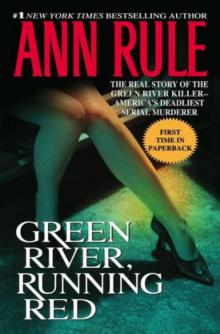 Green River, Running Red
Green River, Running Red Bitter Harvest
Bitter Harvest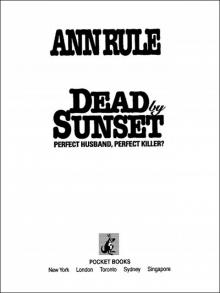 Dead by Sunset: Perfect Husband, Perfect Killer?
Dead by Sunset: Perfect Husband, Perfect Killer?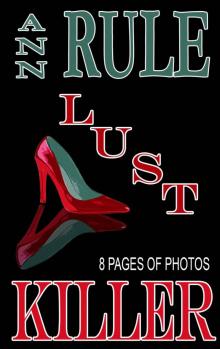 Lust Killer
Lust Killer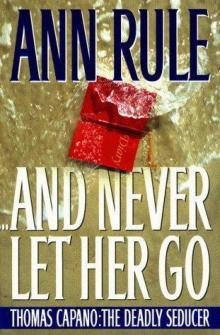 And Never Let Her Go: Thomas Capano: The Deadly Seducer
And Never Let Her Go: Thomas Capano: The Deadly Seducer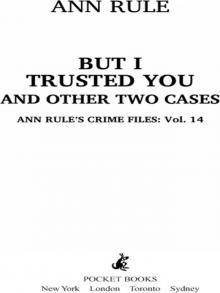 But I Trusted You and Other True Cases
But I Trusted You and Other True Cases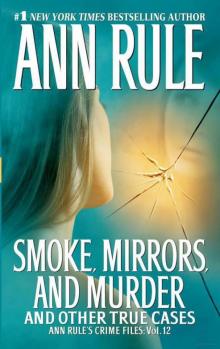 Smoke, Mirrors, and Murder and Other True Cases
Smoke, Mirrors, and Murder and Other True Cases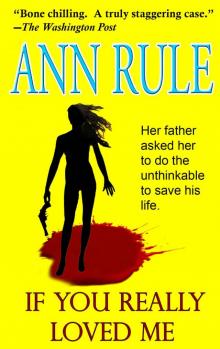 If You Really Loved Me
If You Really Loved Me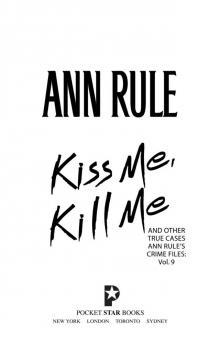 Kiss Me, Kill Me and Other True Cases
Kiss Me, Kill Me and Other True Cases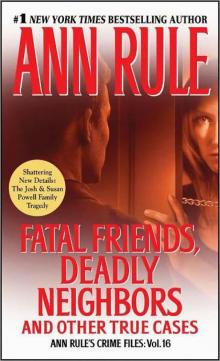 Fatal Friends, Deadly Neighbors and Other True Cases
Fatal Friends, Deadly Neighbors and Other True Cases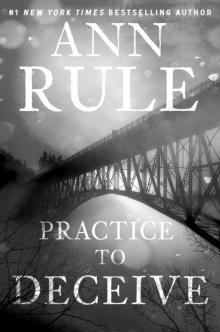 Practice to Deceive
Practice to Deceive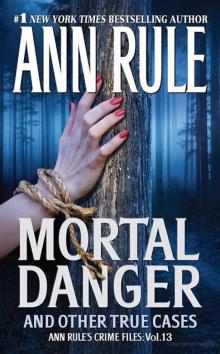 Mortal Danger and Other True Cases
Mortal Danger and Other True Cases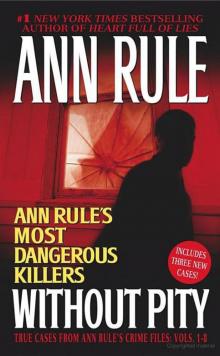 Without Pity: Ann Rule's Most Dangerous Killers
Without Pity: Ann Rule's Most Dangerous Killers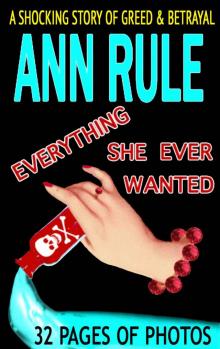 Everything She Ever Wanted
Everything She Ever Wanted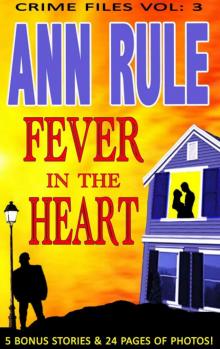 A Fever in the Heart and Other True Cases
A Fever in the Heart and Other True Cases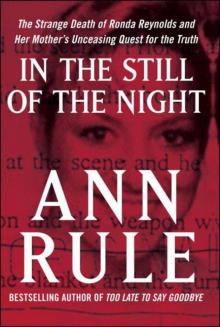 In the Still of the Night
In the Still of the Night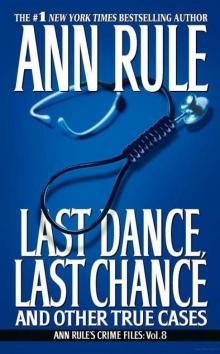 LAST DANCE, LAST CHANCE - and Other True Cases
LAST DANCE, LAST CHANCE - and Other True Cases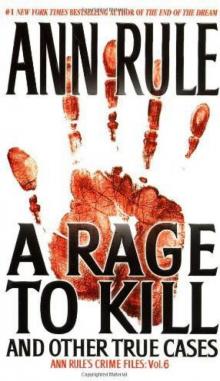 A Rage to Kill
A Rage to Kill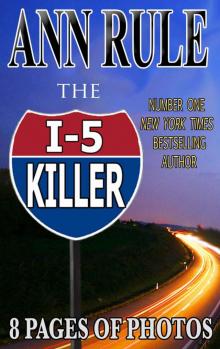 The I-5 Killer
The I-5 Killer The Stranger Beside Me
The Stranger Beside Me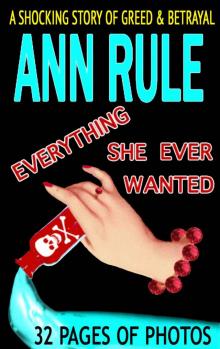 Everything She Ever Wanted: A True Story of Obsessive Love, Murder, and Betrayal
Everything She Ever Wanted: A True Story of Obsessive Love, Murder, and Betrayal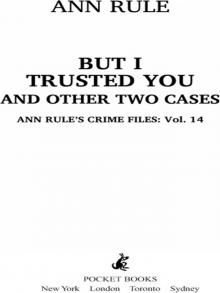 But I Trusted You
But I Trusted You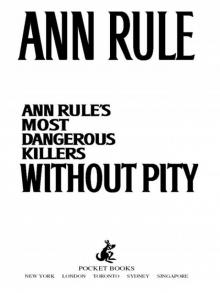 Without Pity
Without Pity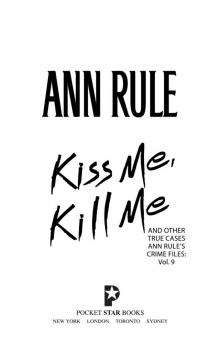 Kiss Me, Kill Me
Kiss Me, Kill Me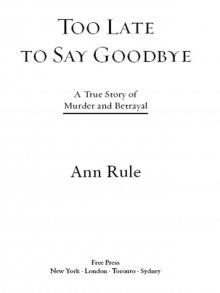 Too Late to Say Goodbye
Too Late to Say Goodbye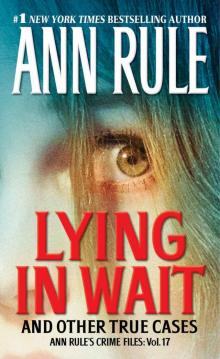 Lying in Wait
Lying in Wait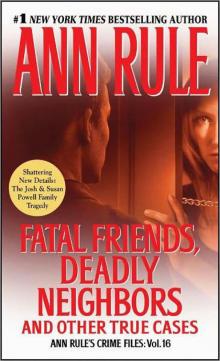 Fatal Friends, Deadly Neighbors
Fatal Friends, Deadly Neighbors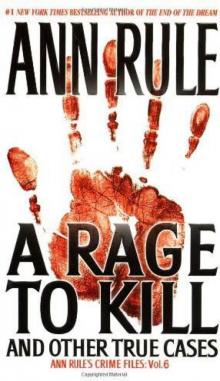 A Rage to Kill: And Other True Cases
A Rage to Kill: And Other True Cases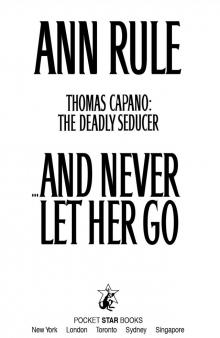 And Never Let Her Go
And Never Let Her Go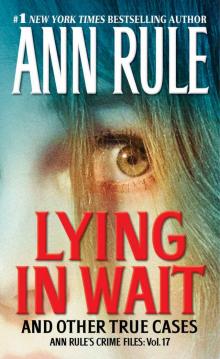 Lying in Wait Ann Rule's Crime Files Vol.17
Lying in Wait Ann Rule's Crime Files Vol.17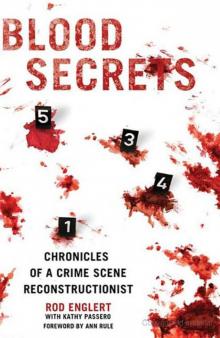 Blood Secrets: Chronicles of a Crime Scene Reconstructionist
Blood Secrets: Chronicles of a Crime Scene Reconstructionist No Regrets
No Regrets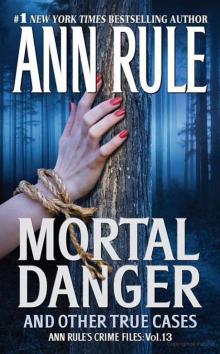 Mortal Danger
Mortal Danger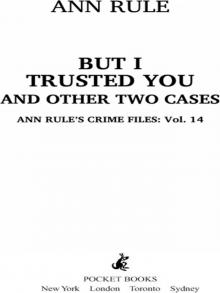 But I Trusted You: Ann Rule's Crime Files #14
But I Trusted You: Ann Rule's Crime Files #14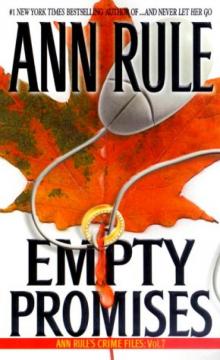 Empty Promises
Empty Promises Dead by Sunset
Dead by Sunset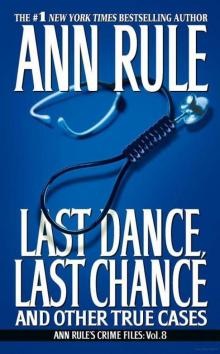 Last Dance, Last Chance
Last Dance, Last Chance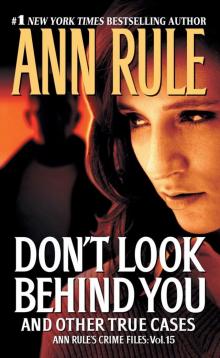 Don't Look Behind You
Don't Look Behind You